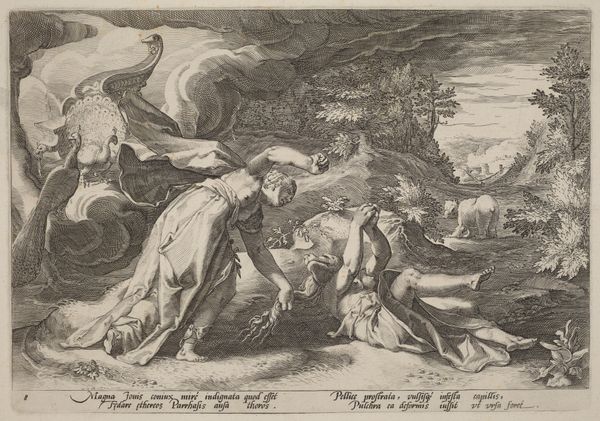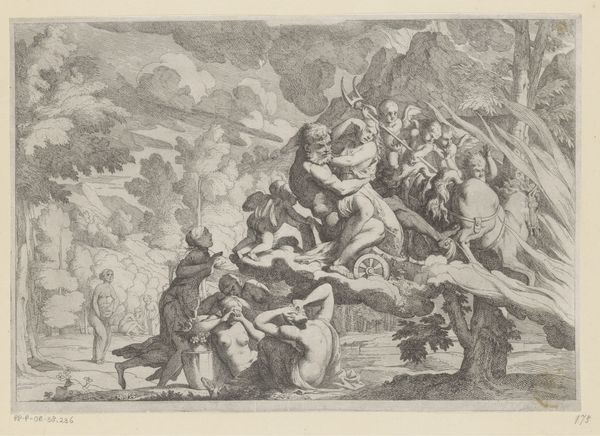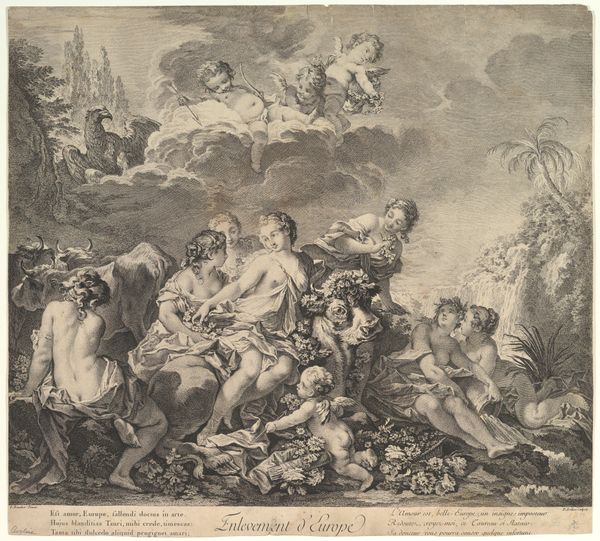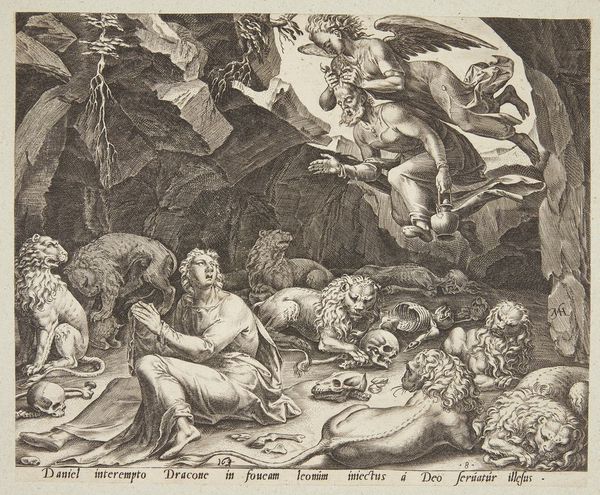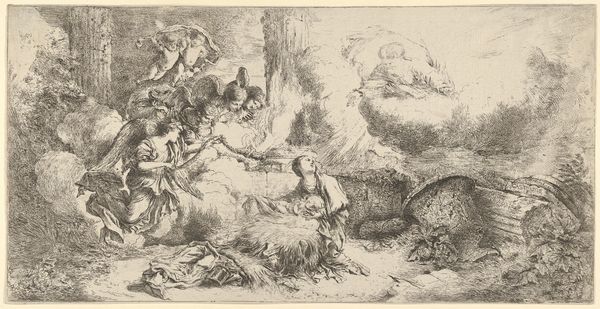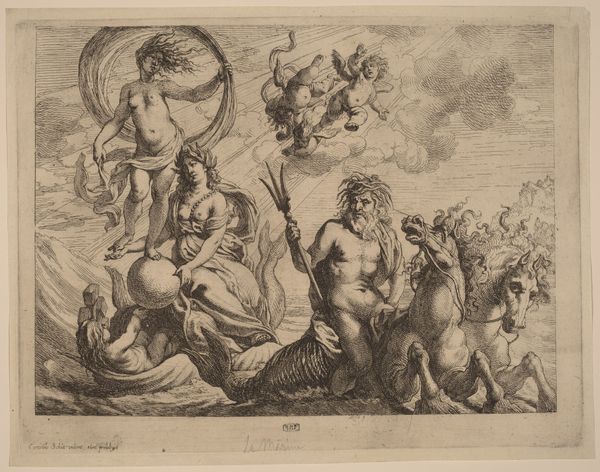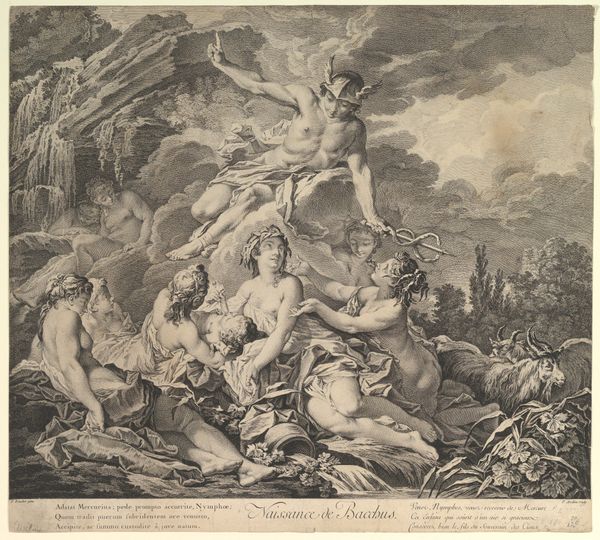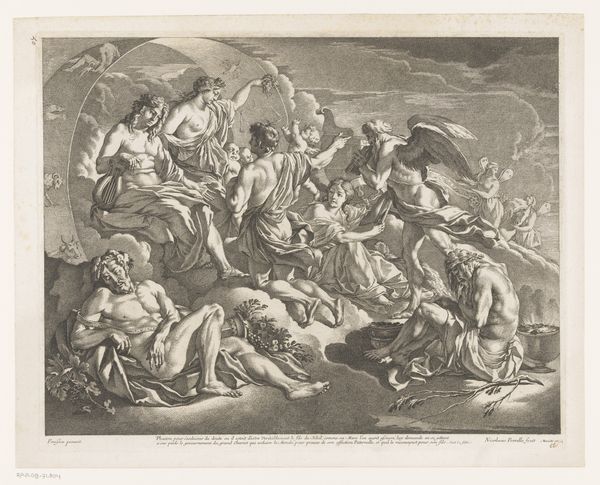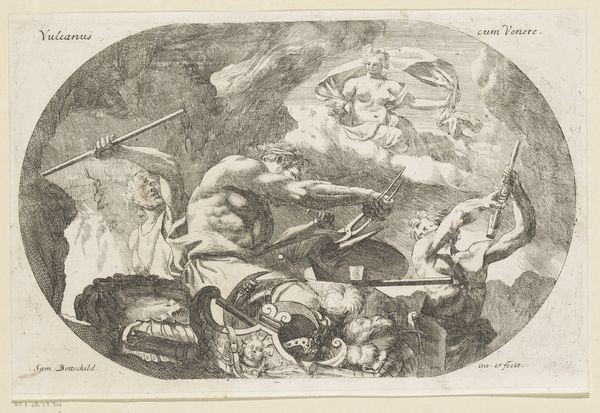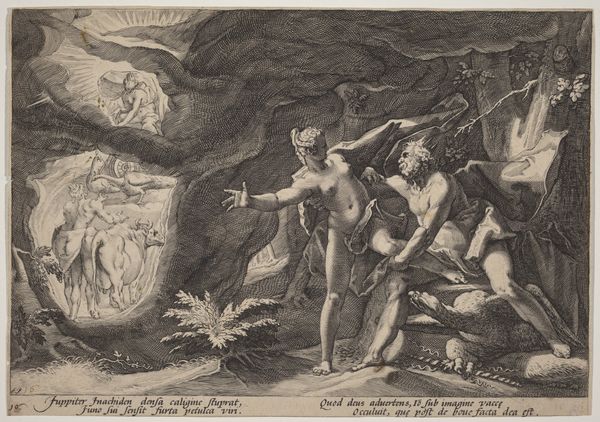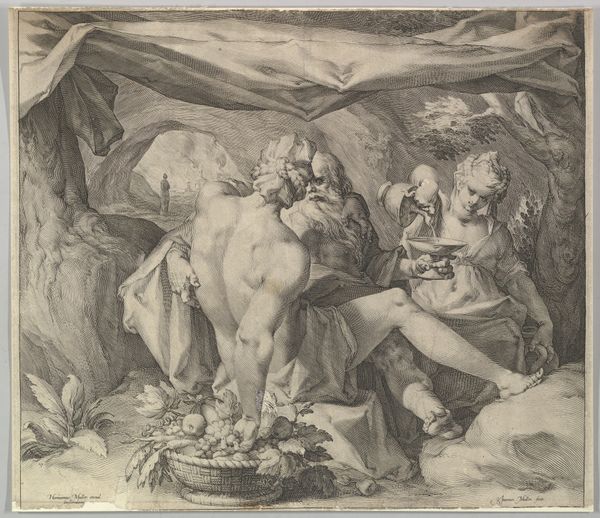
print, engraving
#
allegory
#
baroque
# print
#
landscape
#
figuration
#
history-painting
#
engraving
Dimensions: sheet: 17.6 x 25.4 cm (6 15/16 x 10 in.)
Copyright: National Gallery of Art: CC0 1.0
Editor: Looking at Hendrick Goltzius's "The Fall of Phaeton," created around 1600 as an engraving, I'm struck by the chaotic energy and almost theatrical drama. What socio-political undercurrents might be feeding into this kind of dramatic visualization of classical myth? Curator: That's a great starting point. The late 16th and early 17th centuries witnessed significant political and religious upheaval, shaping artistic expression. Goltzius’s dramatic depiction of Phaeton echoes anxieties about social order and the dangers of unchecked power. What about the very public display of a cautionary tale—what’s its didactic function in a culture grappling with authority? Editor: So, it's less about the literal story of Phaeton and more about a commentary on contemporary issues? The idea of unchecked power feels particularly resonant. Curator: Exactly. Think about the context: the Dutch Republic’s struggle for independence. The print becomes a stage for exploring themes of hubris, divine retribution, and the consequences of defying established norms. Who gets to wield power, and how? Where were such prints typically displayed? And how accessible would an engraving such as this be to various segments of the public at the time? Editor: I imagine it would be publicly accessible as prints can be easily reproduced and distributed and reach a broader audience outside the elite. The choice of a dramatic, cautionary myth then serves almost as a public service announcement about governance, doesn’t it? Curator: Precisely! Its reproduction meant wide circulation. Reflecting anxieties through myth allowed artists like Goltzius to indirectly critique power structures, engaging a broader public in discussions about social order through familiar classical narratives. How else does its accessibility shape or shift how we understand the work and its impact? Editor: Thinking about it in those terms makes me realize that the choice of Phaeton isn't arbitrary; it's actively engaging with ideas of authority and potential instability in Goltzius's society. I initially viewed it as a simple depiction of mythology, but the socio-political layering makes it far more compelling. Curator: Precisely. Now we can appreciate it not only as a masterful engraving but also as a commentary of its era.
Comments
No comments
Be the first to comment and join the conversation on the ultimate creative platform.
